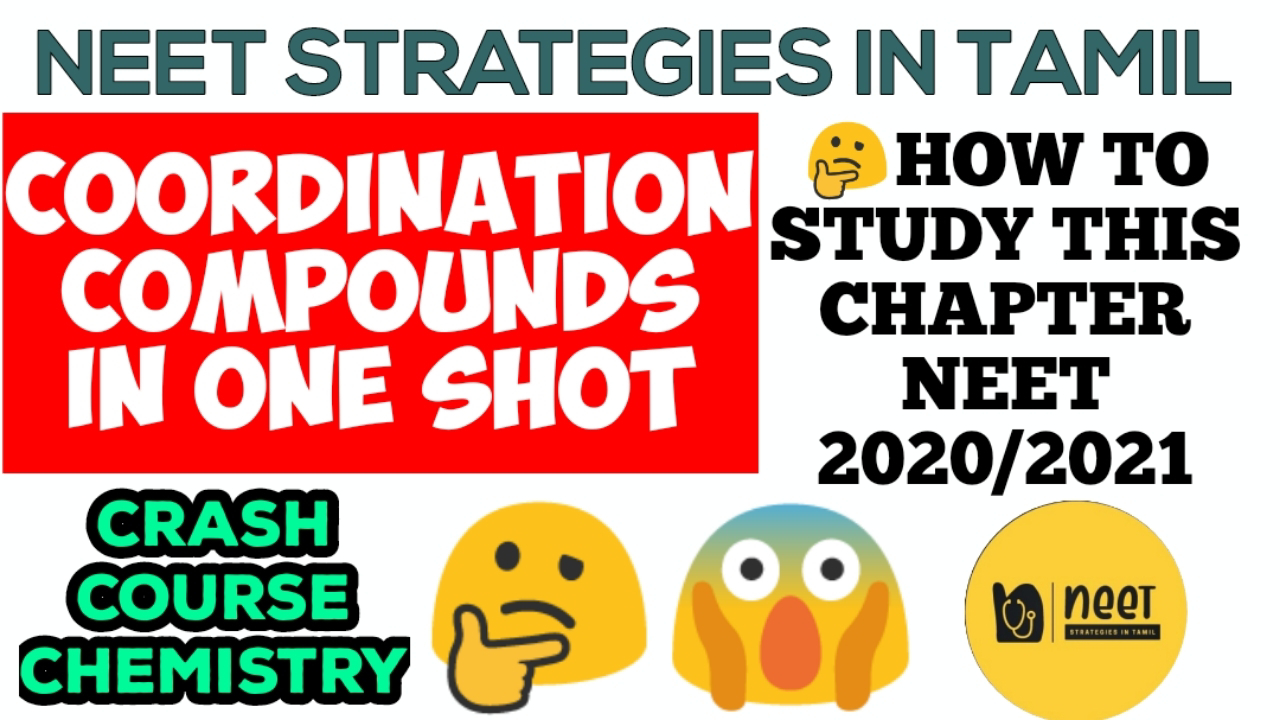COORDINATION COMPOUNDS
Coordination compounds is the most important and high weightage chapter in chemistry according to NEET
Every year 3-4 questions are being asked from this CHAPTER.
DIFFICULTY LEVEL of MCQs asked from this chapter is "EASY-AVERAGE"
Contents:
1. Know the postulates of Werner's theory of Coordination Compounds
2. Central atom/ions, ligand, coordination number, oxidation number, coordination sphere, homoleptic and heteroleptic compounds
3. Write the nomenclature of mononuclear coordination compounds explain the different types of isomerism in coordination compounds
4. Know the nature of bonding in coordination compounds in terms of valence bond and crystal field theories
Quick summary of the chapter with flowchart
Double salts.
These are the molecular compounds which exist only in the solid state and lose their identity when dissolved in water, i.e., they dissociate into simple ions completely when dissolved in water. In such compounds the individual properties of the constituent particles are not lost.
Terms Related to Coordination Compounds
1. Complex ion or Coordination Entity
It is an electrically charged species in which central metal atom or ion is surrounded by number of ions or neutral molecules.
(i) Cationic complex entity It is the complex ion which carries positive charge. e.g., [Pt(NH3)4]2+
(ii) Anionic complex entity It is the complex ion which carries negative charge. e.g., [Fe(CN)6]4-
2. Central Atom or Ion
The atom or ion to which a fixed number of ions or groups are bound is .ned central atom or ion. It is also referred as Lewis acid. e.g., in (NiCI2(H2O)4]. Ni is central metal atom. It is generally transition element or inner-transition element.
3. Ligands
Ligands is electron donating species (ions or molecules) bound to the Central atom in the coordination entity.
Nomenclature of coordination compounds
The most important tricky questions will be asked from the nomenclature part of this chapter coordination compounds.
To know this and understand and apply this in your MCQs, I request you to watch any YouTube video so that you will learn the basics to answer the MCQs from nomenclature and then practice lots of MCQ following the rules of nomenclature given in the notes PDF at the end of this blog.
Isomerization in coordination compounds
Structural isomerism
1. Ionization isomerization
2. Coordination isomerization
3. Linkage isomerization
4. Hydrate isomerization
Stereoisomerism
1. Geometrical isomerism
2. Optical isomerism
VALENCE BOND THEORY
CRYSTAL FIELD THEORY
These two theories aur the the most important topics from this chapter from which conceptually tricky questions have been asked since past years.
I will suggest you to watch youtube videos separately for that each theory is and then go through my notes in this blog so that you will come to know the concept in your mind and then you can practice lots of MCQs from these two topics from previous year questions
I hope this blog have created a good idea about the coordination compounds chapter in your mind and help you to prepare the chapter well..
THANK YOU
Watch my YouTube video,
"Coordination compounds in one shot- how to study this chapter for Neet and previous year questions explained"
LINK FOR TO VIDEO :
Link for the PDF :




Upload more notes anna
ReplyDeleteDefinetely, i will daily upload studymaterials
ReplyDeleteAnna environmental chemistry nd chemistry in everyday life lesson la erundhu questions neet ki varuma na
ReplyDeleteAll the contents you mentioned in post is too good and can be very useful. I will keep it in mind, thanks for sharing the information keep updating, looking forward for more posts.Thanks buy 5cl-adb-a
ReplyDelete